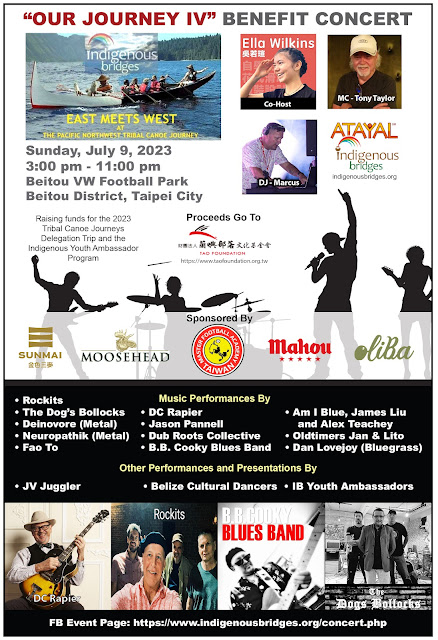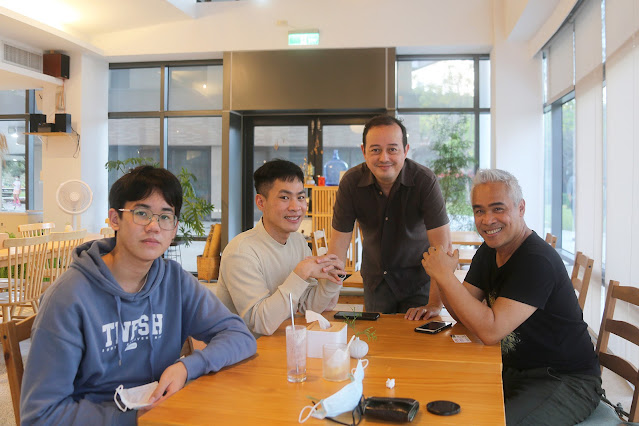A-way Maya Titiyon - Saisiyat People - Taiwan
So’o kayzaeh ay! My name is A-way (ah-wai) Maya Titiyon and my mother is from the Saisiyat People. It’s one of the smallest indigenous groups in the country. Our traditional lands are in Western Taiwan, mostly in the mountainous areas of Hsinchu (Wufong) and Miaoli (Nanzhuang and Shitan). My tribe (Wufong) has been greatly influenced by the much larger ethnic groups of Atayal and Haaka through intermarriage, which is why our language has become endangered with only about 1000 fully-fluent speakers.
Even though my mother grew up in a Saisiyat village when she was young, she never learned the language, as she had to speak Mandarin at school, and most of her classmates either spoke Haaka or Atayal outside of the classroom. So, I grew up in an environment where I had little exposure to our culture, but at important festivals like paSta'ay, my family would bring their children back to participate. Even if I'm rarely in the tribe while I'm in the city, I never forget where my roots are.
A-way after getting 1st place on the ILPT.
yaba’ ki ’oya’ ma’an haSa’ malnoSaySiyat.
My parents can't speak the Saisiya language, and even my grandpa doesn't know much. Not many people in my family speak Saisiya language anymore. So I started learning Saisiya language with Teacher Feng in the fourth grade of elementary school, and now I have online classes with Teacher Feng two hours every week, and most of what I have learned in the last class will be forgotten in the next class. So, learning the language is really hard for me because there is no environment around me to use the language. I’ve been learning the language for 7 years now, and recently, I have just been admitted to the top of this year's intermediate indigenous languages proficiency test (ILPT 原住民族語言能力測驗-賽夏族語 中級). This is the first time I've taken the intermediate level and I can’t believe I actually got first place! All I can say is that I'm fortunate! I’m very fortunate to have such a great teacher who taught me Saisiya songs, culture, language, etc.
The teacher constantly encouraged me, cultivated me to invest in my own culture, and helped me understand and see the culture of the Saisiya people. So this award ceremony is a motivation for me to continue to learn about my own culture. As an indigenous person, I have a special connection with other indigenous people in Taiwan, I hope in the future that I can also become a person who can give this motivation to the next generation!
One of the best parts of having Indigenous roots is the ability to connect with other Indigenous people in Taiwan and learning from them. Recently, I attended a wonderful event that introduced me to the Indigenous people from the Hualien region of Taiwan, the Truku. I was really pleased to see so many other young people my age from most of the different tribes attend. Over a period of 4 days, my classmates and I learned a lot about the history and meanings behind the Truku tribal songs and dances from our generous and interesting hosts
Traditional dance and music can be divided into two parts. The first being traditional life rituals and the other is tourist performances. Traditional music and dance are ways to feel closer to our ancestors. I was fascinated to learn that the rhythms of traditional Truku songs and music come from the patterns of the steady beats made by the women who would weave and make their own clothing on foot looms. This weaving rhythm is called “Pung Pung'' in the Truku language.
In the past, weaving was only for women, but in recent years, men have also started to take up weaving. I thought this was an excellent idea to keep the tradition alive, but sadly, I learned that this makes the elders very disappointed to see men do what should be only done by the women. When I heard this, I suddenly had a strong sense of a personal mission that I must inherit the weaving culture and keep it alive for future generations.
This is the era of cultural revitalization. As young tribal members of this generation, we should learn about our culture as soon as we can because as youth we have a lot of time but the elders who hold the knowledge only have a limited time to teach us before they join their ancestors over the Rainbow Bridge.
One of the more difficult parts of the camp was when we learned how to make Truku-style mouth harps out of bamboo. This was not easy at all for many of us. There were quite a few students who accidentally carved into their own hands with the sharp tools and made themselves bleed. The mouth harp Is a musical instrument that is common throughout most of the indigenous tribes, but each tribe has their own unique variations of the instrument.
While we were crafting the bamboo harps, I was enchanted by the songs that Piteyru, our tattooed elder and teacher were playing, so I had to ask the teacher about the beautiful music. Piteyru told me the songs were performed by several different Austronesian performers from around the Pacific, such as Madagascar, Hawaii, and Taiwan. The group named “Small Island - Big Song'' use their unique local traditional instruments to create music.
Piteyru told me that, “If you hear an indigenous song, you can feel and see how long it has been there. The songs are documents of who we are, and the only gift our ancestors gave us."
These words really touched my soul and inspired me to make a big plan and follow my dreams. I believe that one day I should be someone who brings the hearts of the Austronesians closer together by carrying our Taiwanese indigenous culture forward to the international stage.





Comments
Post a Comment